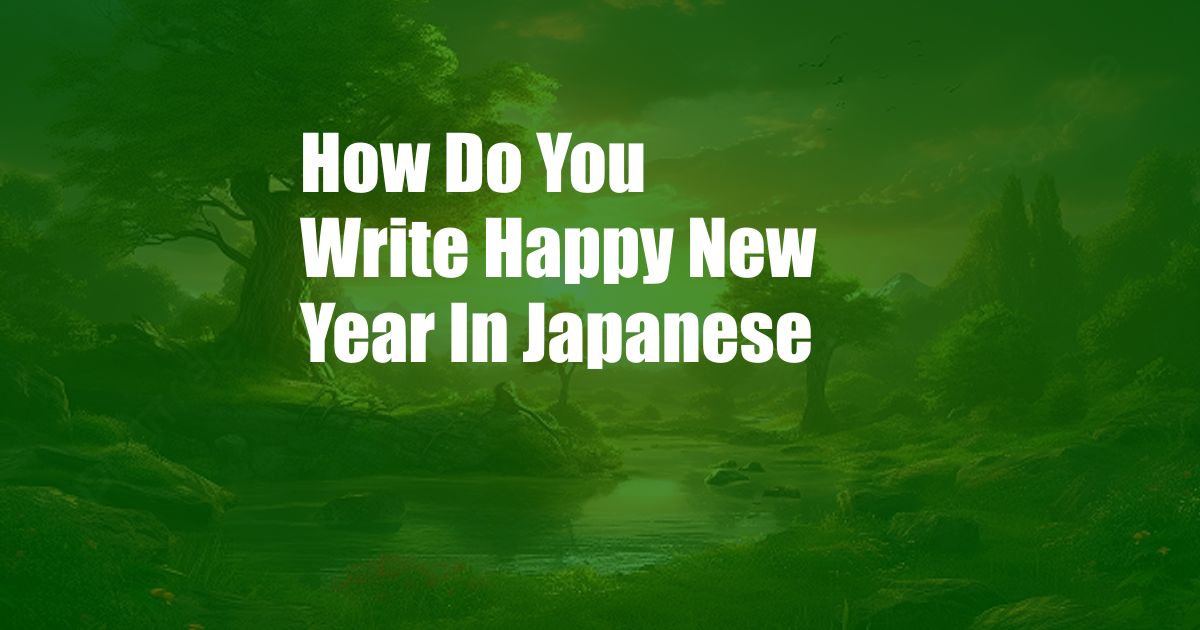
How to Write “Happy New Year” in Japanese and Its Cultural Significance
New Year is a time of celebration and renewal worldwide, and Japan is no exception. With its rich cultural traditions, sending New Year’s greetings holds special importance in Japanese society. Learn how to express your well wishes with a heartfelt “Happy New Year” in Japanese while exploring the intriguing customs and etiquette surrounding this auspicious occasion.
Celebrating O-shogatsu: The Japanese New Year
In Japan, the New Year, known as O-shogatsu, is a national holiday spanning the first three days of January. It’s a time for families to gather, reflect on the past year, and welcome the upcoming one with hope and blessings. During this period, elaborate decorations adorn homes and streets, and people engage in traditional rituals and festivities.
Writing “Happy New Year” in Japanese
To convey your New Year’s greetings in Japanese, the most common phrase is “Akemashite omedetō gozaimasu” (あけましておめでとうございます). This formal expression translates literally to “Congratulations on the opening of the year.”
Variations of New Year’s Greetings
In addition to the standard greeting, there are several variations depending on the context and formality of the situation. Below are some common alternatives:
- O-shogatsu omedetō gozaimasu (お正月おめでとうございます): This slightly more formal greeting specifically acknowledges the O-shogatsu holiday.
- Akemashite omedetō (あけましておめでとう): A shortened and informal version of the standard greeting.
- Yoroshiku onegai itashimasu (よろしくお願いいたします): A versatile phrase often used during New Year’s greetings to express gratitude and request continued support.
Tips for Sending New Year’s Greetings in Japanese
- Choose the appropriate greeting based on the recipient’s relationship and formality of the situation.
- When writing a greeting card, use vertical writing and include the sender’s name and address.
- Mail your New Year’s greetings early to ensure they arrive before January 1st.
- Consider sending small gifts or osechi (traditional New Year’s dishes) as a thoughtful gesture.
Etiquette of New Year’s Greetings
- Greet others with a warm smile and sincere wishes.
- Avoid using negative language or discussing unpleasant topics.
- Dress appropriately, as New Year’s is a time for formality and respect.
- If invited to a New Year’s party, bring a small gift and arrive on time.
FAQs on Writing “Happy New Year” in Japanese
Q: Why is O-shogatsu such an important holiday in Japan?
A: O-shogatsu is a time for family, reflection, and renewal. It marks a fresh start in the Japanese calendar and is deeply rooted in both Shinto and Buddhist traditions.
Q: What are some other ways to say “Happy New Year” in Japanese?
A: You can also say “O-shogatsu omedetō gozaimasu” or “Akemashite omedetō.”
Q: How do I wish someone a Happy New Year in Japanese if I don’t know them well?
A: You can use the informal greeting “Akemashite omedetō” or “Yoroshiku onegai itashimasu.”
Conclusion
Expressing “Happy New Year” in Japanese is more than just sending a simple greeting. It’s a gesture of respect, warmth, and renewal that reflects the rich cultural traditions of Japan. Whether you’re sending a card or exchanging greetings in person, let these insights guide you in sharing your well wishes during this auspicious time.
Are you interested in learning more about Japanese New Year traditions? Share your thoughts and questions in the comments below.